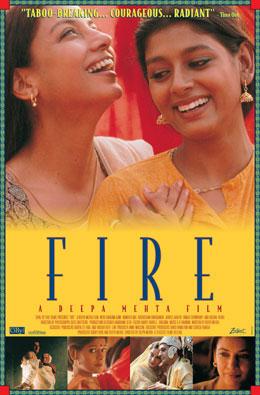Bollywood changing India’s attitude to homosexuality

A father tries to marry off his daughter to a handsome bachelor. She resists, insisting her heart lies with someone else. There is singing and dancing. It could be the trailer for any Bollywood romance.
Only the barest hint is given that Ek Ladki Ko Dekha Toh Aisa Laga (How I Felt When I Saw that Girl) is a pioneering release for Indian cinema: the first mainstream, star-studded blockbuster about a family coming to terms with their daughter loving another woman.
Opening across the country on Friday, Ek Ladki has been the subject of a careful marketing campaign that has avoided explicitly spelling out the novel features of its plot. In part, that is to avoid controversy: Fire, a 1996 film that featured a lesbian relationship, resulted in cinemas being trashed by mobs of fanatical Hindus.
It is also part of a strategy to project the film beyond the liberal enclaves of Delhi, Mumbai and other major cities, where arthouse and independent films about same-sex relationships have already screened to small audiences.
Last September, after more than a decade of legal campaigning, India scrapped a colonial-era ban on homosexuality. The next step is changing people’s attitudes, says the film’s director, Shelly Chopra Dhar.
“Nobody wants to be preached at,” Dhar says. “Our culture is steeped in storytelling and folklore and following by example. Cinema has come into our lives and taken over that role, it is the socialising agent. I’m not telling [audiences] what is right, but they can experience it through my characters.”
Earlier Indian mainstream films that addressed homosexuality have framed it as something radical, says Raja Sen, a film critic with the Hindustan Times.
In Fire, the female protagonists sleep together out of frustration because their husbands have renounced sex. In Heroine (2012), the main character “gives into lesbianism as part of her moral decay”, he says.
When producers were looking for someone to play a gay character in Kapoor & Sons (2016), they were forced to search beyond India, eventually casting the Pakistani actor Fawad Khan. “He was very good, but he got the role largely because a lot of mainstream Bollywood actors said no to that part, fearing what it would do to their image,” Sen says.
Films such as Dedh Ishqiya (2014) tried to have it both ways, hinting heavily that two female protagonists were in a relationship, but never quite saying so. “It was very nudge nudge wink wink,” Sen says. “If someone wanted to stubbornly say these are just two friends who are riding off into the sunset together, you could say that.”
In contrast, Ek Ladki has the trappings of a classic Bollywood story about forbidden love – that just happens to be between two women. It is also the first time the crossover Hollywood star Anil Kapoor has acted with his daughter Sonam Kapoor, adding to its box office appeal.
The film is part of a trend of taboo-breaking Bollywood films in recent years. Veere Di Wedding (2018) featured a gay character in a minor part, but the film was more controversial for being the first to show a woman masturbating.
Pad Man (2018) cast the megastar Akshay Kumar in the story of an Indian pioneer of cheap menstrual pads.
Dhar says she deliberately set Ek Ladki outside of a major city to break stereotypes. “Critics say, [homosexuality] is for modern people, it has come from the west,” she says. “I’ve broken that.”
But ultimately its success will depend on something more traditional: whether the film is entertaining. “The golden rule of cinema is entertainment,” she says “And if you don’t follow that, it’s not cinema.”









